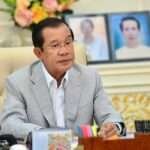Despite global economic challenges, Cambodia registers a lower average annual inflation rate of 1.9% in Q1 of 2023, showing economic stability and resilience. With growth in non-garment manufacturing and tourism sectors, the Kingdom demonstrates its capacity for sustained development amid global uncertainty.
Cambodia has impressively managed to register a lower average annual inflation rate of 1.9 percent in the first quarter of 2023, demonstrating the country’s strong economic stability and resilience despite ongoing global challenges, according to the finance ministry.
This significant drop from 5.9 percent recorded a year earlier, and 3.2 percent in the prior quarter, showcases the Kingdom’s ability to maintain a stable macroeconomic environment and exchange rates amid regional tumult and international geopolitical tensions, which have impacted global consumer demand and trade growth.
Economic Performance in Challenging Times
The Cambodian Ministry of Economy and Finance highlighted the uncertain international economic environment in its first-quarter report, with persistently high inflation and unfavorable financial market conditions taking center stage. Nevertheless, the International Monetary Fund (IMF) reaffirmed earlier this year that the Cambodian economy is on track to achieve a robust 5.6 percent growth rate in 2023, even as world growth is predicted to slow to 2.8 percent.
Sectors Driving Growth
The finance ministry attributed Cambodia’s remarkable projected growth rate to robust expansion in non-garment manufacturing industries, whether they are export-oriented or not. Additionally, the tourism sector—which is vital to the country’s economy—has experienced a significant revival as local and international travelers return, contributing to the upward trajectory.
Factors Contributing to Lower Inflation Rate
The Ministry’s report also noted that the average exchange rate for the January-March period stood at 4,083.99 riel per US dollar, reflecting an increase of 0.51 percent year-on-year, but a decline of 1.08 percent quarter-on-quarter. This lower domestic inflation rate can be attributed to decreasing prices for essential commodities, such as oil, gas, and food.
Economist Ky Sereyvath from the Royal Academy of Cambodia explained that this downward trend in prices for critical global commodities has contributed to the Kingdom’s comparatively low first-quarter inflation rate, while also highlighting a potential decline in domestic demand. This has, in turn, preempted a slowdown in sales and subsequent price increases, emphasizing the importance of economic stability through prudent inflation management.
Government and Central Bank Policies Bolstering Stability
Sereyvath further underscored the significance of positive, albeit low, inflation levels and the government’s commitment to macroeconomic stability, public order, and citizens’ welfare. Moreover, the National Bank of Cambodia’s (NBC) management of the exchange rate serves as an effective monetary tool for controlling inflation.
Market Trends for Major Commodities
The finance ministry’s report detailed first-quarter data on international average prices and trends for various significant commodity classes. Crude oil witnessed a decrease of 18.2 percent, natural rubber prices were down 21.5 percent, and the indices for energy, non-energy, and precious metals experienced subsequent declines. However, gold saw an increase of 0.80 percent, and milled rice prices surged by 16.4 percent.
Despite a tumultuous global economic landscape, Cambodia’s successful navigation of the stormy seas and its lowered inflation rate in the first quarter of 2023 showcase a strong and resilient economy. With diversified industries and tourism regaining momentum, the Kingdom is well-positioned to face future challenges and continue on its path of growth and development.
Source: The PhnomPenh Post








